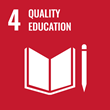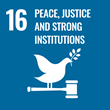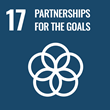
Project information
Continuity and Rupture in Central European Art and Architecture, 1918-1939 — CRAACE
(CRAACE)

- Project Identification
- 786314
- Project Period
- 4/2019 - 2/2024
- Investor / Pogramme / Project type
-
European Union
- Horizon 2020
- ERC (Excellent Science)
- MU Faculty or unit
-
Faculty of Arts
- Matthew Rampley, B.A., Ph.D.
- Mgr. Marta Filipová, Ph.D.
- Julia Secklehner, M.Phil., Ph.D.
- Nóra Veszprémi, Ph.D.
When new political elites and social structures emerge out of a historical rupture, how are art and architecture affected? In
1918 the political map of central Europe was redrawn as a result of the collapse of Austria-Hungary, marking a new era for
the region. Through comparative analysis of the visual arts in 3 states built on the ruins of the Habsburg Empire (Austria,
Hungary and [former] Czechoslovakia), this project examines how such political discontinuity affected art and architecture
between 1918 and 1939. The project is organised into 4 themes, each resulting in a monograph:
1. Vernacular modernisms, nostalgia and the avant-garde
2. Presenting the state: world fairs and exhibitionary cultures
3. Piety, reaction and renewal
4. Contested histories: monuments, memory and representations of the historical past
It is the first systematic and comprehensive trans-national study of this type, based on the claim that the successor states
to Austria-Hungary belonged to a common cultural space informed by the shared memory of the long years of Habsburg
society and culture. The project focuses on the contradictory ways that visual arts of artists and architects in central Europe
adapted to and tried to shape new socio-political circumstances in the light of the past. The project thus examines the long
shadow of the Habsburg Empire over the art and culture of the twentieth century.
The project also considers the impact of the political and ideological imperatives of the three successor states on the visual
arts; how did governments treat the past? Did they encourage a sense of historical caesura or look to the past for
legitimation? How did artists and architects respond to such new impulses? In answering these questions the project
analyses the conflicts between avant-gardes and more conservative artistic movements; the role of the visual arts in
interwar memory politics; the place of art in the nexus of religion, national and state identity.
Sustainable Development Goals
Masaryk University is committed to the UN Sustainable Development Goals, which aim to improve the conditions and quality of life on our planet by 2030.
Publications
Total number of publications: 187
2021
-
Artwork of the Month, March 2021: The Gate of Heroes in Szeged (1936)
Year: 2021, type: Popularization text
-
Artwork of the Month, May 2021: The Church of St. Anthony of Padua by Gyula Rimanóczy (1931–34)
Year: 2021, type: Popularization text
-
ARTWORK OF THE MONTH, OCTOBER 2021: THE CIVILISED WOMAN BY ZDENĚK ROSSMANN (1929)
Year: 2021, type: Popularization text
-
ARTWORK OF THE MONTH, SEPTEMBER 2021: THE INDUSTRIAL EXHIBITION HALL IN HIROSHIMA BY JAN LETZEL (1915)
Year: 2021, type: Popularization text
-
Beyond the Cosmopolis. Modernism and Belonging in Central European interwar Art
Year: 2021, type: Appeared in Conference without Proceedings
-
Beyond the single-artist study: Bohumil Kubišta and new ways of monographic research in the Czech Lands: Book review
Year: 2021, type:
-
Čí je to modernita? Paradox meziválečné "civilizované ženy"
Year: 2021, type:
-
Decolonizing Central Europe : Czech Art and the Question of ‘Colonial Innocence’
VISUAL RESOURCES, year: 2021, volume: 37, edition: 1, DOI
-
Design muzeum mezi jeskyní a obchodním domem
Year: 2021, type:
-
Displaying the ‘Legacy of the National Endeavour’: Czechoslovakia at the Century of Progress Exposition, 1933.
Year: 2021, type: Appeared in Conference without Proceedings




